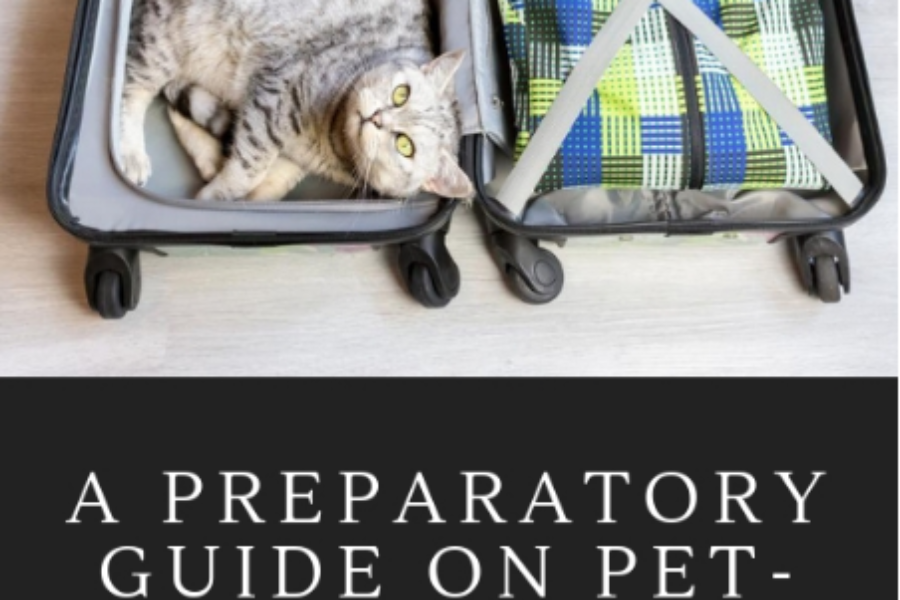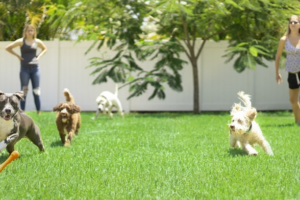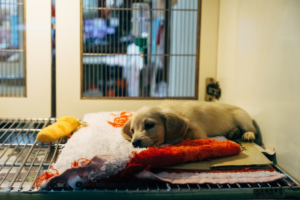Think about traveling with your pet, as the same as traveling with a small child. You can never predict how they’ll react once the door closes.
Once they realize that the air pressure is closing off their hearing, they’ll either stare off in wonder as they experience this unusual phenomenon, or will just start barking a storm. And then you’ll have to tolerate the ensuing embarrassment.
As such, it’s not so difficult to understand why some owners are usually very anxious about traveling with their pets. And given that you’re a pet owner yourself, you just now starting to realize why more pet owners get nervous.
Now, you could go with the easy way and simply book a room for them at a pet hotel like ours. However, since you want to bring your pet along with you, here are some details you should know about traveling with pets that’ll make your trip easier, and dare we say it, enjoyable!
Pet Travel 101 – All the Details You Need to Know
Find Pet-Friendly Airlines
Especially for international travel, do your research beforehand to find out which airline offers facilities for pets. Some are listed below:
- American Airline:Cabin and cargo. For service animals, cats and dogs.
- JetBlue:Only cabin. For services animals, cats and dogs.
- Air Canada:Cabin and cargo. For service animals, cats and dogs.
- Delta:Cabin and cargo. For service animals, cats and dogs as well as household birds.
- Air India:Cabin and cargo. For service animals, cats and dogs.
- Air France: Cabin and cargo. For service animals, cats and dogs.
- Swiss International Airlines:Cabin and cargo. For service animals, cats, dogs, hares and rabbits.
- Turkish Airlines:Cabin and cargo. For service animals, birds, cats and dogs.
- Frontier Airlines: Cabin only. For service animals, cats, dogs, small animals and birds.
- Lufthansa Airlines: Cabin and cargo. For service animals, cats and dogs.
- OpenSkies:Cabin and cargo. For service animals, cats and dogs.
- Japan Airlines: Cargo only. For service animals, cats, dogs, small birds, small animals.
- Iberia:Cabin and cargo. For service animals, cats, dogs, birds and tortoises.
Prepare Your Pet for Travel
Take your pet to the vet and get them vaccinated. Your pet has to be healthy enough to handle travel, especially if it’s a long flight. Otherwise, they will feel weak and nauseated after the travel.
Some animals are timid so being in the presence of so many strangers and so much noise might just take its toll on them. If your pet is shy, try exposing them to new people and noisy places so they can get used to it.
Decide on the Safest Place
Typically, the safest place on a plane is its cabin. However, if you want that cabin space, you’ll need to satisfy some requirements. Your pet has to be less than 15 pounds. They should also be able to fit in a carrier that’s small enough to be put beneath your seat. The carrier itself should be large enough that your pet can turn or stand. So any small animals such as rabbits, cats or small-breed dogs are admissible.
Pro Tip: If your pet is small enough and can easily fit in the carrier, then book a window seat. This’ll keep them away from the busy noise of the middle aisle.
Prepare if They’re Going in the Hold
For larger pets, make sure they have everything they need. Use a carrier that’s IATA approved. When bundling them up into the carrier, use removable zip ties so you can close the carrier securely. Also, freeze a bowl or water and place it inside before you close it up. By the time they flight takes off, the ice will have melted and your pet will be able to drink the water.
As for food, do not over-feed them before they fly, otherwise they’ll become nauseous. Feed them at least 6-8 hours before travel and make sure they relieve themselves before the flight so they can stay comforted.
Also, attach their food to the carrier and tell the flight attendants so someone can feed them if you feel like they may get hungry later.
Prepare to Pay Extra
Each airline charges differently for transporting animals so compare the prices before booking the flight. The price usually depends on the animal’s size, your destination and the location from which you’re flying. So the rates will differ a lot, going from $200 to around $2000.
Although, if you have a service animal, you won’t need to worry about paying since they travel for free.
Get their Health Certificate
You will most likely be asked for your pet’s vet certificate by customs and immigration agencies. Print out 2-3 copies and keep them on your person. And get a digital copy as well. This’ll keep the paperwork to a minimum and will also assure the authorities that your dog is in perfect health.

Do Not Worry
Easier said than done, but if you stress about your pet’s eating, drinking and sleeping habits, you won’t have a very good flight. Given that you’ve already taken care of everything, just let go and relax. There are trained employees on board. Your pet will have no problems at all.
If your pet is already fussy about travel, then taking them on a long-haul flight might not be a good idea.
In this situation, it’s best if you simply get them a room in a pet hotel such as Twissted Whiskers. We offer feline boarding as well as space for dogs, small animals and reptiles.
With a well-trained staff looking after your pet, you won’t need to worry about their health and well-being either. If you’ve got a trip coming up, then book your pet a room today, and have a look at our boarding policies to know what you should do.
And if you have any questions about our service or even special requests, contact us at (678) 714-5477 and give us the details. We’ll make sure that your pet receives the care they deserve!






